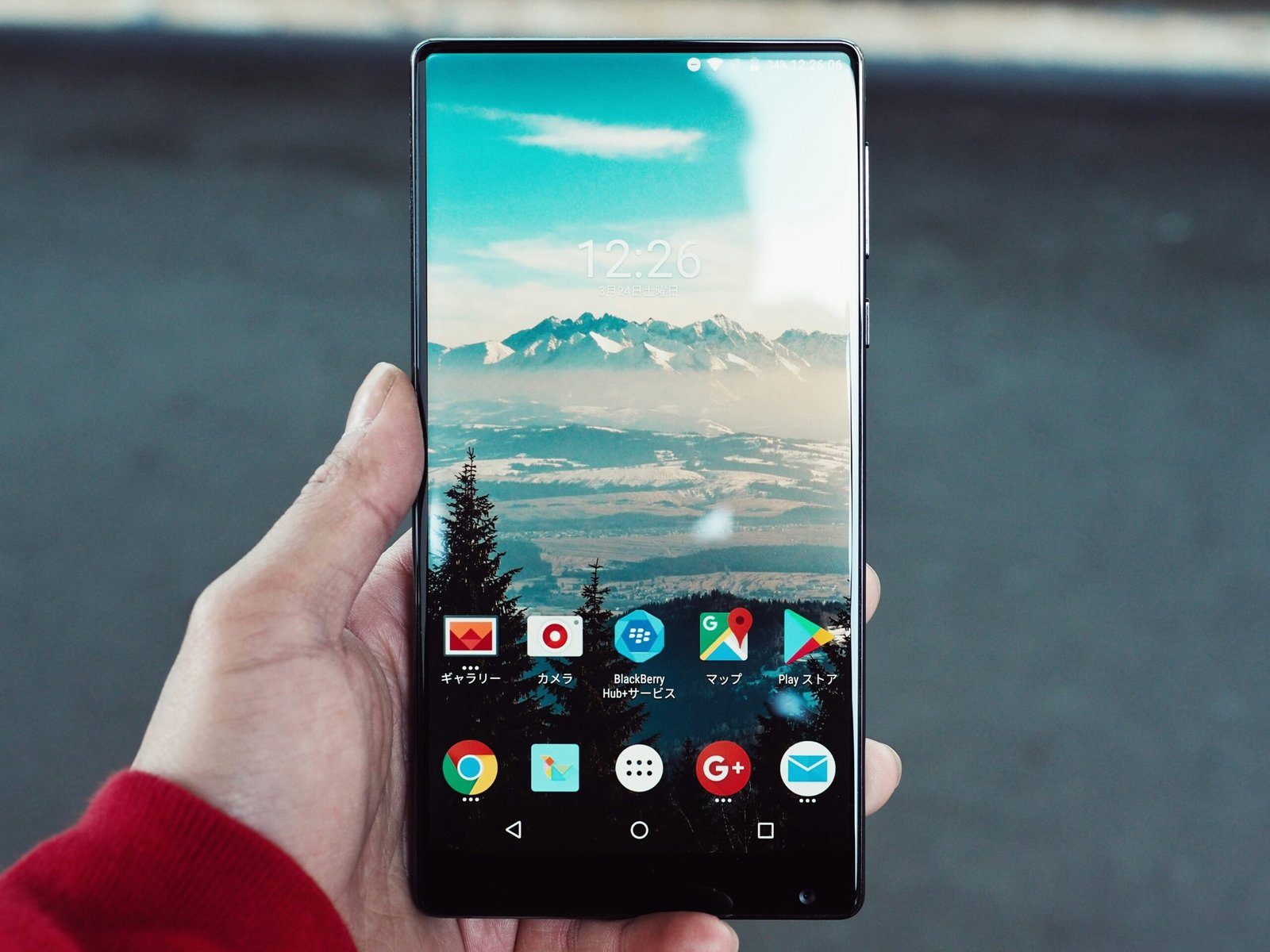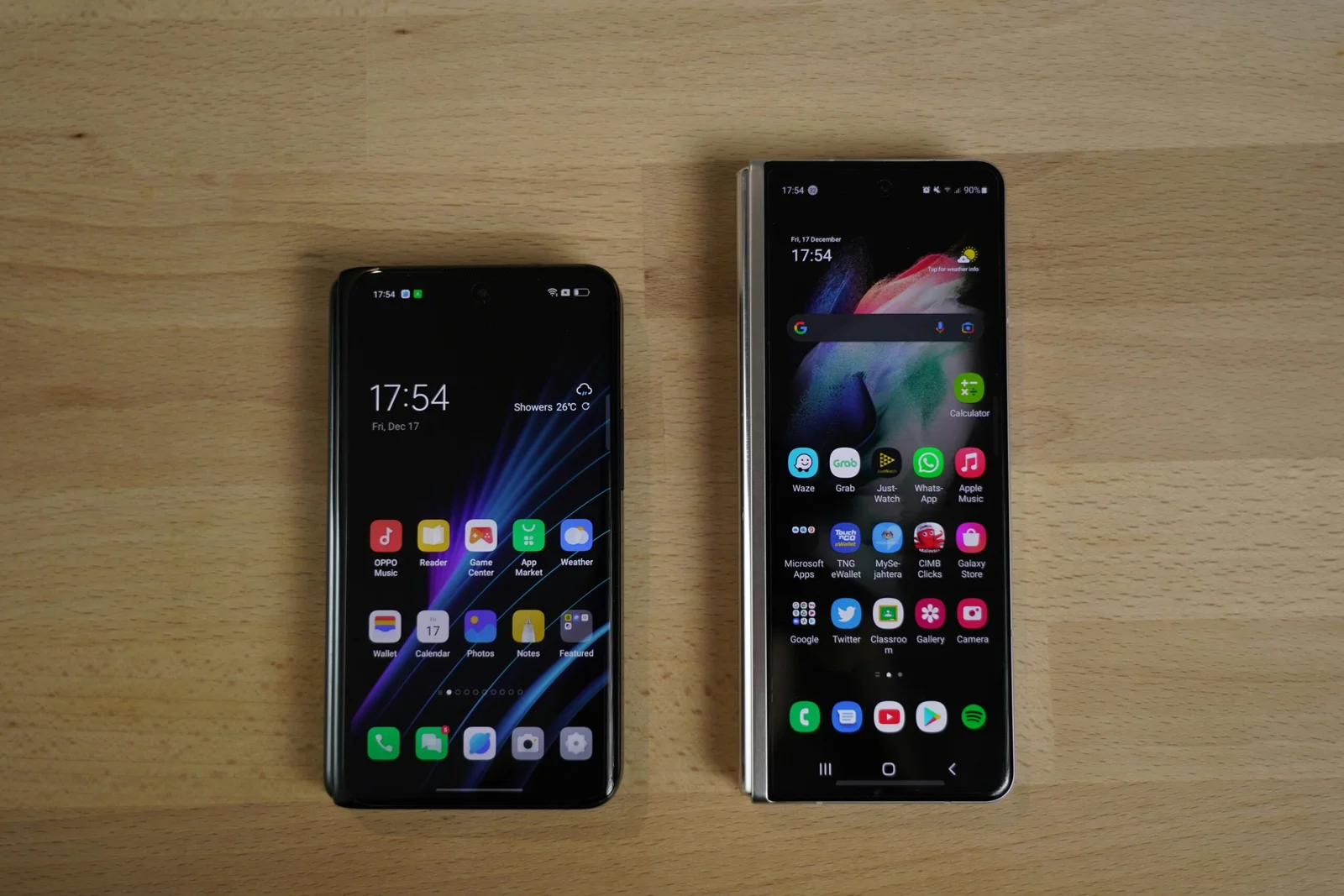
Introduction to 5G Technology
5G technology represents the fifth generation of mobile network technology, succeeding the previous generations from 1G through 4G. Each generation brought its own set of advancements: 1G introduced analog voice, 2G added digital voice and text messaging, 3G enabled basic mobile internet, and 4G brought high-speed internet and improved data services. 5G builds on these developments by offering significantly enhanced features.
One of the most notable features of 5G technology is its increased speed. While 4G networks can offer peak speeds of around 100 Mbps, 5G networks are capable of achieving speeds upwards of 10 Gbps. This tremendous boost allows for faster download and upload times, streaming high-definition content seamlessly, and more efficient real-time communications.
Another critical feature of 5G is its lower latency. Latency refers to the delay before a transfer of data begins following an instruction. 4G networks typically experience latency around 50 milliseconds, but 5G aims to reduce this to as low as 1 millisecond. This reduction is vital for applications requiring real-time responsiveness, such as autonomous vehicles, remote surgery, and immersive virtual reality experiences.
Furthermore, 5G technology offers higher bandwidth, which means it can support a larger number of devices simultaneously without a decrease in performance. This is particularly important in our increasingly connected world, where the Internet of Things (IoT) is continually expanding, and more devices are being used per individual.
The global rollout of 5G is well underway, with numerous countries and mobile operators deploying 5G networks. As of now, many urban areas around the world have 5G coverage, with ongoing efforts to expand its reach to rural and underserved regions. This expansion promises to bring the benefits of 5G technology to a broader audience, fostering innovation and enhancing connectivity on a global scale.
Enhanced Mobile Data Speeds
5G technology represents a substantial leap forward in terms of mobile data speeds, potentially reaching up to 10 Gbps. This is a significant improvement over 4G, which typically offers speeds between 100 Mbps and 1 Gbps. The enhanced speeds of 5G are not just incremental but transformative, enabling a new era of mobile connectivity.
The technical advancements that make these high speeds possible include the utilization of higher-frequency bands, known as millimeter waves, and advanced antenna technologies like Massive MIMO (Multiple Input Multiple Output). These technologies collectively enhance the capacity and efficiency of data transmission, ensuring that more data can be transferred more quickly and reliably. Additionally, 5G’s reduced latency, which is expected to be around 1 millisecond, further contributes to the improved performance and responsiveness of mobile networks.
In practical terms, the boost in data speeds has a profound impact on user experiences. For instance, streaming high-definition video content becomes seamless, with no buffering or lag. Downloading large files, such as movies or software updates, takes mere seconds rather than minutes. Cloud services also benefit greatly, as the faster speeds make it easier to access and manipulate data stored remotely, effectively bridging the gap between local and cloud storage.
Real-world examples illustrate these benefits vividly. Imagine a scenario where you can download a full-length high-definition movie in just a few seconds while on the go, or participate in a high-stakes, data-intensive multiplayer game without any noticeable latency. Such experiences are not merely fantasies but achievable realities with 5G technology.
Overall, the enhanced mobile data speeds provided by 5G technology are set to revolutionize how we interact with our mobile devices, unlocking new possibilities and improving the efficiency of existing applications. Whether for entertainment, productivity, or communication, the speed advantages of 5G offer a tangible and significant upgrade over previous generations of mobile technology.
Reduced Latency and Its Benefits
Latency, in the context of mobile phone networks, refers to the time it takes for data to travel from one point to another. Lower latency means faster response times, which is a critical factor for real-time applications. With 5G technology, latency can be reduced to as low as 1 millisecond, significantly enhancing the performance and responsiveness of mobile devices.
Reduced latency is particularly beneficial in gaming. In online multiplayer games, even a slight delay can be the difference between victory and defeat. The near-instantaneous data transmission provided by 5G ensures a smoother, more responsive gaming experience, minimizing lag and enabling real-time interactions. This advancement is a game-changer for competitive gamers and game developers alike.
Remote work also stands to gain from the low latency of 5G. Video conferencing, a staple of modern remote work, requires minimal delay to facilitate natural, productive conversations. High latency can lead to awkward interruptions and a lack of cohesion in discussions. With 5G, video calls occur in real time, making virtual meetings feel more like in-person interactions. Additionally, cloud-based applications and remote desktop operations become more efficient, fostering better collaboration and productivity.
Virtual reality (VR) and augmented reality (AR) are other areas where reduced latency can have a substantial impact. These technologies require high-speed, low-latency connections to function optimally. For instance, in VR gaming or training simulations, any delay in data transmission can break the immersion and render the experience less effective. The low latency of 5G ensures seamless, immersive VR and AR experiences, opening new possibilities in entertainment, education, and professional training.
Overall, the reduced latency offered by 5G technology enhances the performance and user experience across various applications, from gaming and remote work to VR and AR. This improvement in responsiveness and real-time interaction underscores the transformative potential of 5G in revolutionizing mobile phone usage and beyond.
Increased Network Capacity
One of the most significant advantages of 5G technology is its ability to dramatically increase network capacity. This enhancement allows a greater number of devices to connect simultaneously without experiencing a drop in performance. Unlike its predecessors, 5G leverages advanced technical advancements, such as enhanced spectrum efficiency and state-of-the-art antenna technologies, to achieve this remarkable feat.
Spectrum efficiency is a key component in boosting network capacity. 5G utilizes a broader range of frequency bands, including millimeter waves, which offer substantial bandwidth. This expanded spectrum enables the network to carry more data, thereby accommodating a higher number of devices. Additionally, 5G employs sophisticated modulation schemes that optimize the use of available spectrum, leading to more efficient data transmission.
Advanced antenna technologies, such as Massive MIMO (Multiple Input Multiple Output), also play a crucial role in increasing network capacity. Massive MIMO involves deploying multiple antennas at both the transmitter and receiver ends. This configuration enhances signal strength and quality, allowing multiple data streams to be transmitted simultaneously. As a result, the network can support a larger number of concurrent connections, significantly improving overall performance.
The implications of increased network capacity are particularly significant in crowded urban areas and large events. In densely populated cities, where thousands of devices compete for network resources, 5G’s enhanced capacity ensures seamless connectivity. Similarly, at large gatherings like concerts or sports events, 5G can handle the surge in demand, providing users with reliable and high-speed internet access. This capability not only enhances user experience but also enables innovative applications, such as real-time video streaming and augmented reality, to thrive in such environments.
Overall, the increased network capacity enabled by 5G technology represents a transformative shift in mobile connectivity. By leveraging advanced spectrum and antenna technologies, 5G ensures that more devices can connect and communicate efficiently, even in the most challenging scenarios.
Implications for Mobile Phone Design and Battery Life
The advent of 5G technology necessitates significant changes in mobile phone design and battery life management. One of the most notable impacts is the requirement for new hardware components, including 5G modems and advanced antenna systems. These elements are essential for capturing and processing the high-frequency signals that 5G networks utilize. Consequently, mobile phone manufacturers must integrate these components in a way that maintains device aesthetics and ergonomics.
5G modems, for instance, are typically larger and more power-hungry than their 4G counterparts. The integration of these modems often results in a slight increase in the size and weight of mobile phones. Additionally, the need for multiple antennas to support various 5G frequency bands further influences the design. Manufacturers are tasked with strategically placing these antennas to ensure optimal performance without compromising the sleek and compact design that consumers expect.
Battery consumption is another critical consideration in 5G-enabled devices. The higher data speeds and increased connectivity demands of 5G technology can lead to faster battery drain. To address this challenge, manufacturers are exploring several solutions. One approach is the development of more efficient battery technologies, such as solid-state batteries, which offer higher energy densities and longer life spans. Another strategy involves optimizing software and hardware to manage power consumption more effectively, including advanced power-saving modes and more efficient processors.
Moreover, some manufacturers are incorporating larger batteries into their designs to provide the necessary power for extended 5G usage. This, however, must be balanced with maintaining a device’s form factor and user comfort. Enhanced cooling systems are also being implemented to prevent overheating, which can further drain battery life and affect overall performance.
In summary, the transition to 5G technology presents both challenges and opportunities for mobile phone design and battery life. By innovating in hardware integration and power management, manufacturers can create devices that fully leverage the benefits of 5G while meeting user expectations for performance and aesthetics.
Security and Privacy Concerns
As 5G technology continues to revolutionize the mobile phone landscape, it brings with it significant security and privacy concerns. One of the primary issues is the increased attack surface due to the proliferation of connected devices. With more devices linked to the network, the opportunities for cyber-attacks multiply, making the system more vulnerable to potential breaches.
Another critical vulnerability lies in the complexity of 5G networks. Unlike its predecessors, 5G incorporates a variety of technologies, including software-defined networking (SDN) and network functions virtualization (NFV). While these innovations enhance network flexibility and efficiency, they also introduce new entry points for cybercriminals. The integration of these technologies requires robust security protocols to safeguard against exploitation.
Manufacturers and network providers are acutely aware of these challenges and are actively working to fortify 5G networks. They are implementing advanced encryption methods to ensure data transmitted over 5G networks is secure. Additionally, network slicing, which allows the creation of multiple virtual networks within a single physical 5G network, offers the ability to isolate and secure sensitive data traffic.
To further bolster security, network providers are employing sophisticated threat detection systems powered by artificial intelligence (AI) and machine learning (ML). These systems can identify and respond to potential threats in real-time, providing an additional layer of protection for users.
For consumers, safeguarding personal data and privacy in the 5G era requires vigilance. Users should ensure their devices are running the latest software updates, as these often contain critical security patches. Utilizing strong, unique passwords for all accounts and enabling two-factor authentication (2FA) can significantly enhance personal security. Additionally, consumers should be cautious when connecting to public Wi-Fi networks and consider using virtual private networks (VPNs) for an extra layer of protection.
In conclusion, while 5G technology offers numerous benefits, it also presents new security and privacy challenges. Through a combination of advanced technological solutions and proactive consumer practices, these risks can be effectively managed.
5G and the Internet of Things (IoT)
The advent of 5G technology brings a transformative impact on the Internet of Things (IoT), facilitating a new era of connectivity that is more efficient and widespread. 5G networks offer significantly higher data speeds, lower latency, and greater capacity compared to their predecessors, which are essential enhancements for IoT ecosystems. These improvements enable a seamless integration of devices, fostering innovation across a variety of sectors including smart homes, cities, and industries.
In smart homes, 5G technology ensures that interconnected devices operate smoothly and in harmony. For instance, home automation systems, security cameras, and smart appliances can communicate in real-time, providing users with enhanced control and monitoring capabilities. The low latency of 5G is particularly beneficial for tasks that require immediate response, such as adjusting heating systems or managing energy consumption efficiently.
Smart cities are another area where 5G’s impact on IoT is profound. By leveraging 5G networks, cities can deploy a multitude of sensors and connected devices to monitor and manage urban infrastructure more effectively. Traffic management systems, for example, can utilize real-time data to optimize traffic flow and reduce congestion. Similarly, smart grids can benefit from 5G by ensuring stable and efficient energy distribution, which is crucial for accommodating renewable energy sources and minimizing power outages.
Industries are also poised to benefit significantly from the intersection of 5G and IoT. Manufacturing facilities can implement advanced automation and robotics, enhancing productivity and precision. Moreover, predictive maintenance enabled by IoT sensors can detect potential equipment failures before they occur, reducing downtime and maintenance costs.
Among the most futuristic applications of 5G in the IoT realm are autonomous vehicles. These vehicles rely heavily on real-time data exchange with their surroundings to navigate safely and efficiently. The high-speed, low-latency characteristics of 5G networks are critical for enabling vehicles to communicate with each other and with traffic infrastructure, ensuring safe and efficient transportation systems.
Overall, the synergy between 5G technology and IoT is set to revolutionize various aspects of daily life and industrial practices, driving innovation and enhancing efficiency across multiple domains. As 5G networks continue to expand, the possibilities for IoT applications will only grow, heralding an era of unprecedented connectivity and smart solutions.
Future Prospects and Challenges
The advent of 5G technology heralds a new era of potential advancements and innovations within the mobile phone industry. One of the most anticipated benefits of 5G is its ability to facilitate augmented reality (AR) and advanced artificial intelligence (AI) applications. With significantly higher data speeds and reduced latency, 5G networks enable real-time processing and seamless interaction, thereby unlocking new possibilities for AR experiences and AI functionalities that were previously constrained by the limitations of 4G networks.
Envisioned applications include immersive AR gaming, enhanced virtual meetings, and sophisticated AI-driven services such as real-time language translation and advanced personal assistants. Moreover, the integration of 5G with Internet of Things (IoT) devices is expected to revolutionize smart homes and cities, creating a more interconnected and efficient digital ecosystem.
However, alongside these promising prospects, several challenges need to be addressed to fully realize the potential of 5G technology. One of the primary obstacles is the development and deployment of the necessary infrastructure. The implementation of 5G requires a vast network of small cells and base stations, necessitating substantial investment and coordination among various stakeholders, including telecommunications companies, governments, and regulatory bodies.
Regulatory issues also pose significant challenges. The allocation of spectrum, standardization of protocols, and ensuring cybersecurity are critical aspects that demand careful consideration and international cooperation. Additionally, the rapid rollout of 5G presents challenges in terms of ensuring that the technology is accessible and affordable, thus preventing a widening of the digital divide between urban and rural areas, or between different socio-economic groups.
In conclusion, while the future prospects of 5G technology in the mobile phone industry are incredibly promising, the path to its widespread adoption and utilization is fraught with challenges. Addressing these issues through collaborative efforts and strategic planning will be essential to harnessing the full potential of 5G and creating a more connected and innovative digital world.






